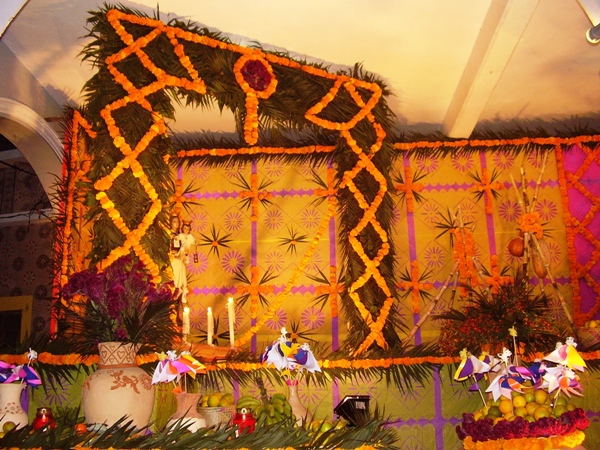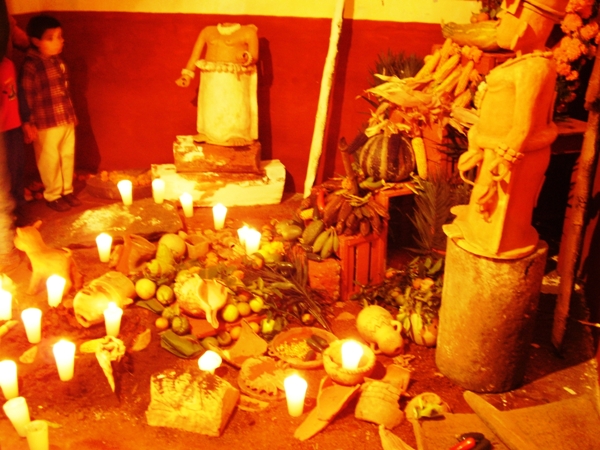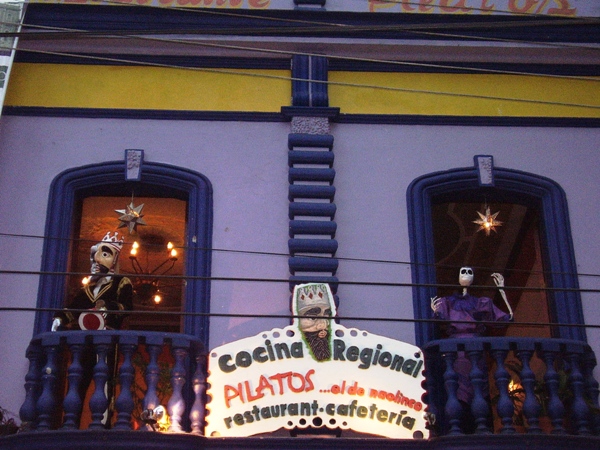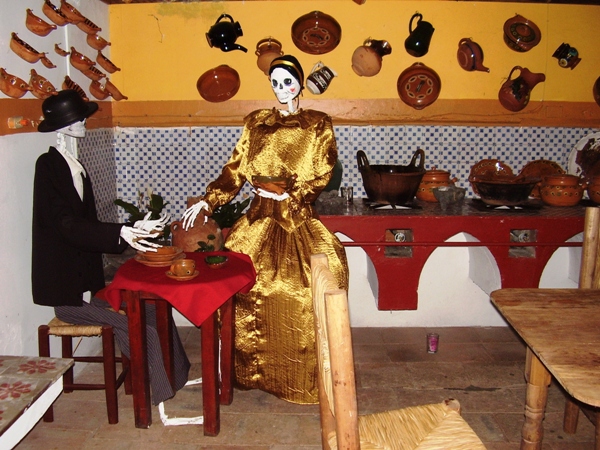The Day of the Dead festival is a uniquely Mexican celebration that has become synonymous with the Catholic and Mesoamerican hybrid culture associated with this Central American country. The story behind the roots of the celebration is an important one in asserting Mexico’s proud indigenous roots.
The festivals’ history lies in pre-Columbian Mesoamerica within the Aztec communities and other similar civilisations. These tribal communities celebrated the death of their loved ones through rituals involving the use of real skulls.
The skulls were collected and carried around by these indigenous people as trophies and were believed to symbolise death and rebirth; they were laid on display during these celebrations as they paid tribute to the deceased.
When the Spanish conquistadores came to Mexico in the 16th century they observed these communities practising the Day of the Dead ritual; believing the ritual to be barbaric and a mockery of death, they tried to eradicate the festival.
The Spanish imposed Catholic believes on the people of Mexico, including the holidays of All Saints Day and All Soul’s Day celebrated during the first two days of November. Unwilling to drop their some 3, 000 year tradition, the Mexican people moved the date of their festival from around July/August so that it corresponded with the 1st and 2nd November, thus allowing them to combine the Mesoamerican ritual with the Catholic holiday.
In this clever compromise the Mexicans managed to preserve their ancient history.
Thankfully, Day of the Dead is no longer frowned upon; in fact it has become internationally famous and seen as one of the world’s top festivals. Since the 1500’s, the elements of the ritual have grown and evolved to include many different methods of honouring and remembering loved ones who have passed. The ethos of the celebration however remains the same: to embrace the notion of death and the afterlife rather than running scared and hiding from it.
One of the most important aspects of the festival is the spectacular altars dedicated to those who have passed. In people’s homes all over country, elaborate shrines are constructed in the run up to the 1st of November; these are adorned with what are known as ofrendas.
These ofrendas include all kinds of things from colourful and decorative tissue/ crêpe paper; food, including a lot of fruit and corn; beverages, including water, wine and tequila; and religious iconography as well as pictures of the deceased themselves. The first day of the festival, November 1st is dedicated to the souls of children who have passed away, while the 2nd of November is dedicated to the souls of adults; for this reason, the decoration of the altars may change over the two days along with the ofrendas used.
Also included in the list of ofrendas is the famous flower associated with Day of the Dead, the marigold. This is known as a cempasuchitl flower or flor de muerto (flower of the dead) in Mexican Spanish and is sold at markets nationwide in the run up to the festival.
The image of the skull, or calaca as it is referred to in Mexico, is the symbol used all over the country to represent this time of year. Different regions of the country use the skull in different ways and some of the finest art in Central America has been produced based around this highly symbolic image.
One thing that is common to the whole country is the small, sugar calacas that are sold at town markets and shops nationwide. In some states, particularly Mexico City, the local bakery’s decorate their shops with pictures of skulls as well as poems written for the dead; people come to the bakeries to buy special Day of the Dead themed bread and baked goods to add their altars or to eat with their families. Meanwhile in Mérida – the capital city of the state of Yucatán – locals as well as citizens from further afield, construct elaborate shrines in Mérida’s Plaza Grande in a bid to win the city’s annual altar competition.
Traditionally, altars are supposed to contain items that represent the four most important elements of nature held sacred to the ancient civilisations of Mesoamerica. These include earth, represented by the crop or food; water, represented by an offering of beverages; air represented by the tissue paper bunting which blows in the wind; and fire, represented by candles, one being lit for each soul who has passed. A traditional dish called mucbil pollo (a type of tamale and chicken pie combination) which is famous all over the Yucatán state and is preserved purely for Day of the Dead is also a big part of this event. The winners of the altar competition go on to compete in a nationwide competition held in Mexico City.
Another important ritual practised during this time is the ‘Ritual of the Vigil of the Little Angels’, mostly celebrated on the island of Janitzio in the state of Michoacán (one of the top places to visit for an authentic Day of the Dead experience).
This happens on the first day of November and involves children visiting the graves of other children accompanied by their families. The children dress in all white and bring toys, food and other offering to lay on the graves of children who have gone before them. In a similar ritual, practised all over Mexico, entire families visit the graves of their loved ones for a sometimes all-night celebration. This usually takes place on the second day of the holiday; on this day families clean and decorate the graves, they then lay food and drink and other offerings upon the grave while they themselves celebrate with drink, food, music and dance. Mariachi bands often attend these occasions; or alternatively, families bring their own instruments to sing and play to the dead, while they dance by their grave-sides and toast their memory.
During my time in Mexico I celebrated the Day of the Dead in a town called Naolinco in the Southern state of Veracruz. Naolinco is famous for its Day of the Dead celebrations and hundreds of locals and tourists alike flock here each year to celebrate the festival in style.
One of the main stop-offs is in the town’s centre, the Casa de la Cultura (House of Culture); here life-size skeletons are put on display in a variety of different poses, some representing flower-sellers, others teachers or even school children. The most elaborate of altars are set up here displaying all manner of ofrendas and are adorned with hundreds of flowers, candles and reels of colourful tissue paper. A second important stop-off in the town is its cemetery, El Panteon.
This is a cemetery like no other, here the deceased don’t just have head stones like most graves but instead are kept in what look like miniature houses. The houses come in all manner of colours and their glass windows allow you to peer inside where flowers and other offering are sheltered.
One of the most unique things about Naolinco is the open, warm hospitality of the people here. The doors of people’s homes remain open over the two days so that visitors to the town can glance inside and admire their altars; while some are even lucky enough to be invited in for some food and drink. In the evenings the town really livens up with crowds of people roaming the streets, some dressed as skeletons, some singing traditional songs and everyone in a positive, celebratory mood.
After the crowds have passed through the streets, paying their respects at their neighbours altars, sharing food, songs and offerings, locals and visitors alike, head to the cemetery where the celebration continues alongside the dead into the small hours of the night. In whatever way Day of the Dead is celebrated, whether though food, competitions, song or private mourning; the concept behind Day of the Dead, once frowned upon by the Spanish and now looked upon with admiration by the rest of the world, is an especially beautiful reminder of the fragility of life and the importance of friends and family.
Jenny O’ Connor is a music journalist and travel writer who specializes in world music. She has traveled extensively and from this has gained a unique knowledge of world musical cultures, which she shares with the rest of the world on her blog
World Music Travel Blog and on Twitter: @jenny_oconnor77











